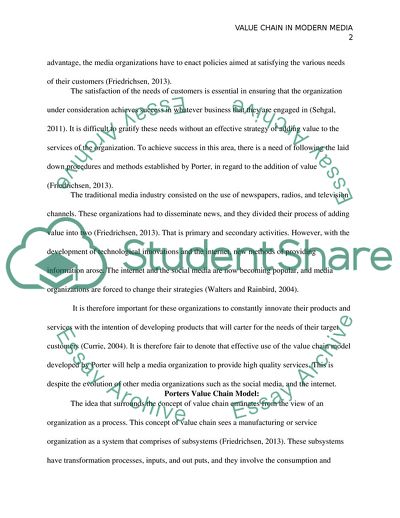Cite this document
(Value Chain in Modern Media Coursework Example | Topics and Well Written Essays - 1750 words, n.d.)
Value Chain in Modern Media Coursework Example | Topics and Well Written Essays - 1750 words. https://studentshare.org/media/1842768-what-place-for-porters-value-chain-model-in-todays-media-industriesis-porter-still-relevant-and-useful-or-are-there-better-ways-of-describing-media-businesses
Value Chain in Modern Media Coursework Example | Topics and Well Written Essays - 1750 words. https://studentshare.org/media/1842768-what-place-for-porters-value-chain-model-in-todays-media-industriesis-porter-still-relevant-and-useful-or-are-there-better-ways-of-describing-media-businesses
(Value Chain in Modern Media Coursework Example | Topics and Well Written Essays - 1750 Words)
Value Chain in Modern Media Coursework Example | Topics and Well Written Essays - 1750 Words. https://studentshare.org/media/1842768-what-place-for-porters-value-chain-model-in-todays-media-industriesis-porter-still-relevant-and-useful-or-are-there-better-ways-of-describing-media-businesses.
Value Chain in Modern Media Coursework Example | Topics and Well Written Essays - 1750 Words. https://studentshare.org/media/1842768-what-place-for-porters-value-chain-model-in-todays-media-industriesis-porter-still-relevant-and-useful-or-are-there-better-ways-of-describing-media-businesses.
“Value Chain in Modern Media Coursework Example | Topics and Well Written Essays - 1750 Words”. https://studentshare.org/media/1842768-what-place-for-porters-value-chain-model-in-todays-media-industriesis-porter-still-relevant-and-useful-or-are-there-better-ways-of-describing-media-businesses.


